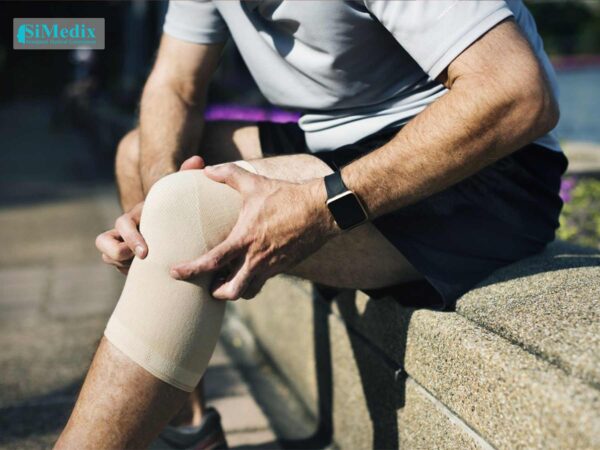What are the Biggest Problems VR Can Solve?

Virtual reality (VR) is becoming an integral part of many industries, but it still carries the stigma of a toy or a gimmick, owing to its heavy public focus on gaming, and the many short-lived attempts to mainstream it in the past. But today’s VR technology is much more – it’s a canvas for expression, a playground for relaxation, and a toolbox for problem solving. From the beginning it has been used to help people, training pilots through early flight sims, and helping to guide engineers through building complex machines. Now that VR is gaining a more prominent place in public consciousness, it is useful to look ahead and ask—what are the biggest problems VR can help solve?
Replacing the Trade Talent Gap

Currently, many trade positions in industries like welding, plumbing, construction, electrical engineering, and civil engineering are held by older people, who have been in those industries for most of their lives, while younger people have been moving towards tech- or service-related jobs. As those older workers retire, they’ll be leaving a significant gap in the workforce in many needed positions, which begs the question of how they’ll be replaced at the pace and in the quantities that will be needed. It is here that VR can lend a virtual hand.
Through VR and with motion controllers and haptic feedback, trainees can learn the motions and methods used in their field. They can explore different trades and specialties within their trades to make sure the work is something that appeals to them, allowing them to more confidently enter into an apprenticeship of their choosing. And once the initial training has been made into a VR format, it can be used by any number of people, with no limitations based on material resources or instructor availability, thus increasing the number of potential trainees while also decreasing the time needed to train them properly. In a time with wage disparities and lower ROI on college for many, VR training is a great way to bridge the gap.
Healing Minds and Bodies
Currently, many trade positions in industries like welding, plumbing, construction, electrical engineering, and civil engineering are held by older people, who have been in those industries for most of their lives, while younger people have been moving towards tech- or service-related jobs. As those older workers retire, they’ll be leaving a significant gap in the workforce in many needed positions, which begs the question of how they’ll be replaced at the pace and in the quantities that will be needed. It is here that VR can lend a virtual hand.
Through VR and with motion controllers and haptic feedback, trainees can learn the motions and methods used in their field. They can explore different trades and specialties within their trades to make sure the work is something that appeals to them, allowing them to more confidently enter into an apprenticeship of their choosing. And once the initial training has been made into a VR format, it can be used by any number of people, with no limitations based on material resources or instructor availability, thus increasing the number of potential trainees while also decreasing the time needed to train them properly. In a time with wage disparities and lower ROI on college for many, VR training is a great way to bridge the gap.

Similarly, virtual simulations can help students learn and internalize lessons more effectively. Students are made to learn about many things for which they are told the theoretical significance: astronomy, civil rights movements, mass human migration or deportation, the destruction of the environment, 3rd world poverty, the differentlyabled, modern day discrimination – the list goes on. Young students, however, typically have a hard time with empathy, especially when they are removed from situations by significant distance, time, or mentality. By using VR to put them directly in these or similar environments, by enabling them to spend time in these peoples shoes, they’ll be able to understand more fully. Increasing the Number Highly-Skilled Professionals The impact of virtual reality is also being felt in the professions, where it has incredible implication for the future of fields like surgery and engineering. VR gives surgeons the ability to see and interact with patient data with a level of accuracy and versatility never before available. Using that, they can prepare for procedures with incredible specificity, being well trained on each patient’s specific situation and needs. It could give surgeons the ability to perform surgeries remotely from anywhere in the world, with no loss of skill or accuracy. The benefits don’t end with the procedure itself_doctors can use VR simulations to better understand the condition of their patients, their unique anatomical nuances, and how to best treat them. All of this gives doctors valuable insight into their patients. The patients can also benefit from this new technology, as it will allow doctors to show them what their exact circumstances are and guide them through the steps that their procedures will entail on scans of their own anatomy.
In engineering, VR can allow far greater numbers of students to partake in lessons that are often limited due to the cost and feasibility of hands-on learning, like in examining the structure and function of a plane engine, for instance. Virtual reality enables students to explore, try, and fail as many times as needed, giving them a fuller, more complete understanding of their material, without wasting limited resources. It also serves as a far more engaging method of learning than simple lectures or textbooks, resulting in higher levels of information retention, as well as a deeper connection to the material.
The End of the Beginning Far from being a gimmick, VR is proving itself to be an incredibly valuable tool for learning and understanding each other and the world around us. A tool that, when used effectively, can help transform the world.
